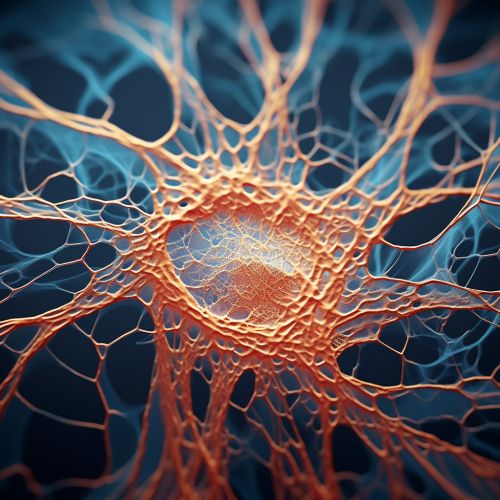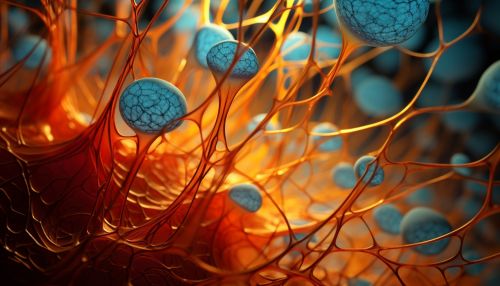Cytoskeleton
Introduction
The cytoskeleton is a complex network of interlinking filaments and tubules that extend throughout the cytoplasm of eukaryotic cells. It is a dynamic structure that maintains cell shape, enables some cell motion (using structures called flagella and cilia), and plays important roles in both intracellular transport (the movement of vesicles and organelles, for example) and cellular division.


Composition
The cytoskeleton is composed of three types of protein filaments: microtubules, actin filaments, and intermediate filaments.
Microtubules
Microtubules, the largest of the cytoskeleton filaments, are hollow rods made of polymerized tubulin that form part of the cytoskeleton and provide structure and shape to eukaryotic cells. Microtubules also serve as a scaffold for the movement of organelles and vesicles within the cell, a process mediated by motor proteins such as kinesin and dynein.
Actin Filaments
Actin filaments, also known as microfilaments, are the thinnest filaments of the cytoskeleton and are composed of linear polymers of G-actin proteins. They play a key role in cell motility and are primarily responsible for cellular contractions, cytokinesis, and the formation of cellular extensions such as lamellipodia and filopodia.
Intermediate Filaments
Intermediate filaments are cytoskeletal components made of a family of related proteins sharing common structural and sequence features. They provide mechanical support for the plasma membrane where it comes into contact with other cells or with the extracellular matrix.
Functions
The cytoskeleton has several critical functions, including determining cell shape, participating in cell division, and allowing cells to move. It also provides a track-like system that directs the movement of organelles and other substances within cells.
Cell Shape
The cytoskeleton provides a structural framework for the cell, giving it strength and shape. It also resists compression, making the cell elastic and allowing it to withstand stretching without tearing.
Cell Division
During mitosis, the cytoskeleton forms the mitotic spindle, a structure that segregates chromosomes between daughter cells. The cytoskeleton is also involved in cytokinesis, the division of the cell's cytoplasm.
Cell Movement
The cytoskeleton enables cell movement through the formation of cellular extensions, including lamellipodia, filopodia, and pseudopodia. It also allows for the movement of cells as a whole, as in the case of white blood cells moving toward the site of a wound or infection.
Regulation
The cytoskeleton is regulated by a variety of proteins that bind to the cytoskeleton, including motor proteins and crosslinking proteins. The activity of these proteins can be modulated by various signaling pathways, allowing for dynamic changes in the cytoskeleton's structure and function.
Diseases and Disorders
Disruptions in the normal functioning of the cytoskeleton have been implicated in a number of diseases and disorders, including cancer, neurodegenerative diseases, and certain genetic disorders.
